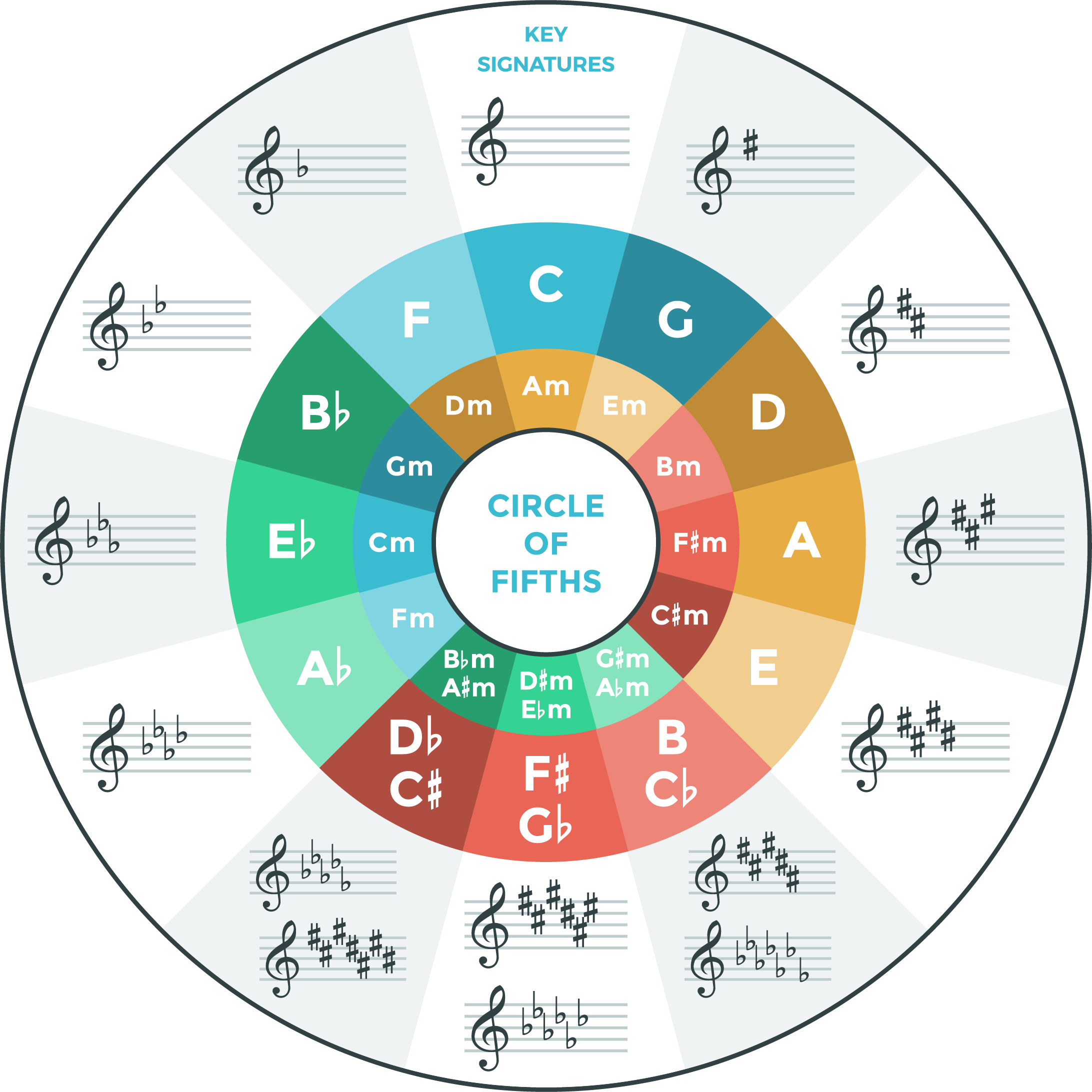
The circle of fifths illustrates the relationship among the 12 tones of the chromatic scale, their key signatures, and the associated major and minor keys.
Adding Sharps
If you begin at C (no sharps or flats) and move right, you’ll have traveled a fifth, and landed on the key of G, which has one added sharp (F#). Move a fifth from G to the key of D, which features two sharps (F#, C#). Move another fifth to A, (F#, C#, G#), and so on.
Notice how each added sharp is also a fifth above the last added sharp?
The pattern continues until you reach C#, which has the most sharps (F#, C#, G#, D#, A#, E#, B#).
“But there’s only five black keys on the piano… how can there be seven sharps?” You’re right. E# is the same as F and B# is the same as C.
At this point, you can return to C and follow a different pattern to learn how flats are added.
Adding Flats
This time, move to your left in fourths. Begin at C, and move up a fourth to F, which features one added flat (Bb). Move another fourth to the key of Bb, which features two flats (Bb, Eb). Move again to Eb, which has three flats (Bb, Eb, Ab), and so on.
Notice how each new flat is also a fourth from the last added flat?
Also notice how sharp and flat keys “collide” at the bottom of the circle.
The key of B and the key of Cb are essentially the same; they’re just notated differently. The same is true for F#/Gb, and Db/C#.
Relative Minor Keys
Pick any key and move up a sixth to find its relative minor key. For example, a sixth above C is A. So, A minor (Am) is the relative minor key of C major. The scales contain the same notes and, therefore, are related.
